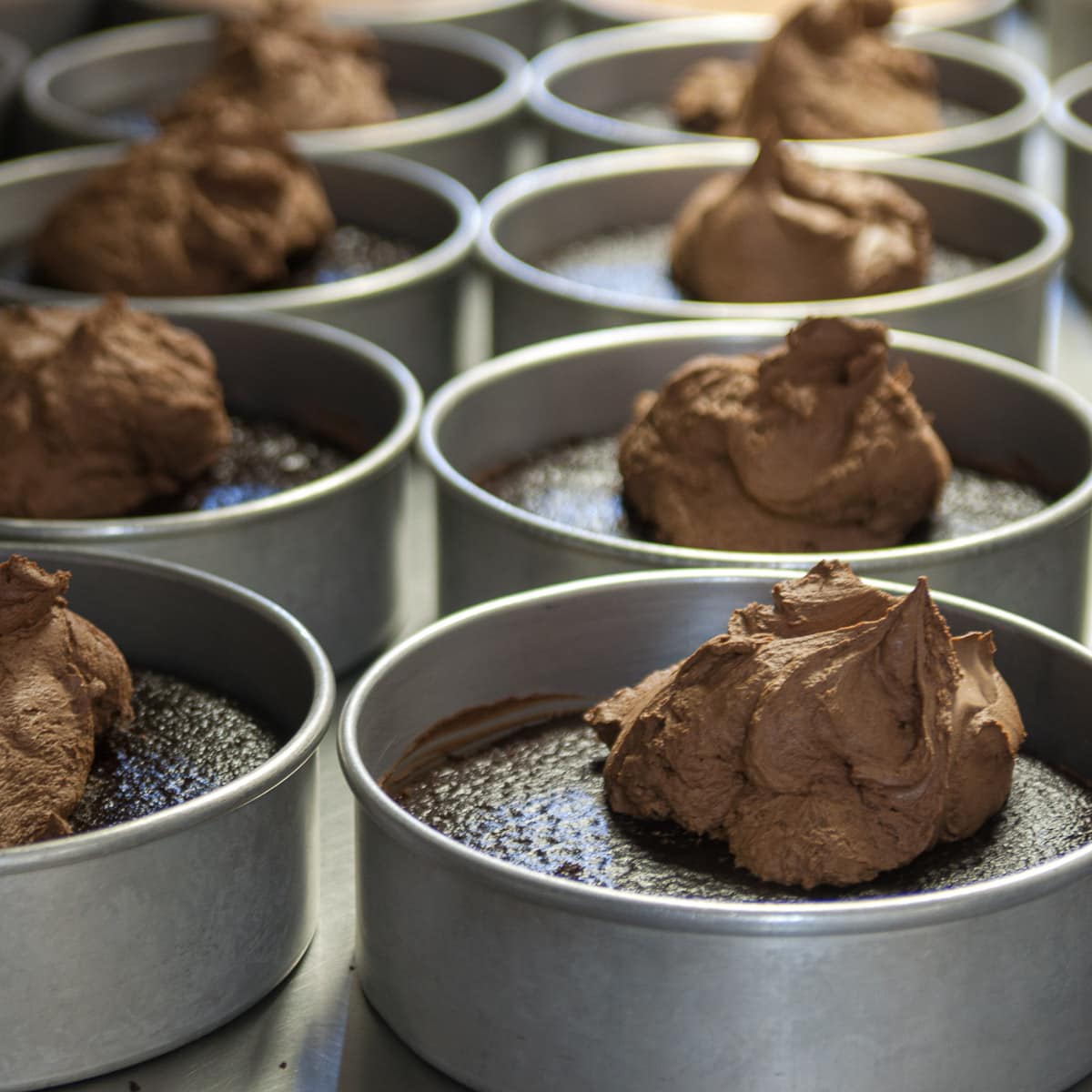
The baking equipment and utensils featured here are from a chapter in my book "European Tarts, Divinely Doable Desserts with Little or No Baking". At the end, I have added additional baking equipment not included in the book as it was strictly tarts, not all baking. I am often asked about the equipment I use and I thought it might be interesting for you to see it. So when you see references to the book, it is this book I am talking about.
I am in no way suggesting that to be a good baker you have to go out and purchase all of this baking equipment at once. My equipment was built up over the years as I needed it. Some of it came from the bakery when I closed it.
The baking equipment shown here is my personal equipment. Some of the equipment is new, some has been with me for many years. The important thing is not that you use what I do, but what works for you in each of the categories. Buy the best you can and the equipment will last a lifetime, as you will see in some of these pictures.
I am not a believer in buying baking equipment for the sake of it. Especially when it comes to small wares. When I remodeled my kitchen, I put all of my small utensils in a box and whatever I didn’t use in six months, I donated to a resale shop. I used exactly one item and I don’t even remember what that was. I also don't believe that the more money you spend the better the equipment. Some of my equipment is high end when I believe it will serve me better than another brand. Wherever possible I have included brand names because they are the ones that have serviced me well for many years.
The equipment pictured below is what I currently use and it may not be available anymore. I have linked to equivalent equipment.
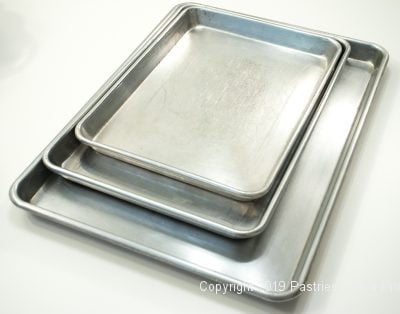
Baking sheetsHeavy commercial sheet pans are 13 gauge aluminum. However, sheet pans of all sizes come in other gauges also. The lower the gauge, the heavier the aluminum and the more expensive the sheet pan. One of the most dependable names in baking equipment is Vollrath. They have an extensive line of sheet pans including many in the 18 to 19 gauge range that is much more affordable. Professionally, as well as personally I have used the 18 to 19 gauge pans because they have performed excellently at the bakery. When you buy 100's of sheet pans as we did at the bakery, cost becomes a consideration.
Additionally, I prefer non-coated regular aluminum pans. Darkened pans brown to quickly and can burn your product. I always line my pans with either parchment paper or aluminum foil as the recipe calls for. While I sometimes spray the paper or foil, I don't usually spray the pans. However, if you do, make sure you wash them well as soon as the product is released to avoid a sticky buildup from the releasing agent.
Full Sheet Pans are 26 x 18 x 1 ⅛ inches deep - these are used in bakeries as they are too big for most home ovens.
Half Sheet Pans are 13 x 18 by 1 ⅛ inches deep - these are my go-to pans for bars, cookies, cake layers, french fries, roasted vegetables, oven roasting anything. Depending upon what I'm baking, I line them with either parchment or foil. I recommend buying two of them since I use them for everything. I don't recommend dark pans or non-stick.
Quarter Sheet Pans are 9 x13 by 1 ⅛ inches deep. One of these is usually sufficient. This pan is especially useful when making bars requiring a thin 9x13 inch pan. The heat is more evenly distributed.
Jelly Roll Pans - these pans are slightly smaller than half sheet pans but larger than quarter- sheet pans. I have recipes from the past that won't translate to half sheet pans so I find these are a necessity for me. However, if you don't have such recipes, you don't need these.
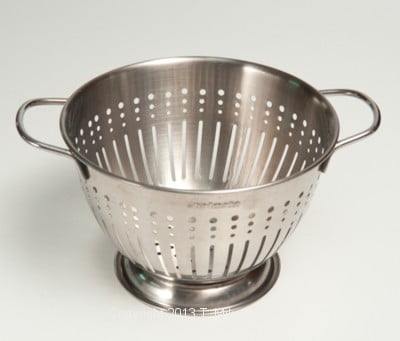
ColanderThis utensil comes in plastic as well as aluminum and stainless steel with feet to hold it above a surface. It is used primarily to let water drain from a product. It is particularly useful to wash fruit and vegetables and drain pasta. I prefer metal to plastic because I find it sturdier. Be sure to get one with feet or a collar to keep it up over the liquid straining out.
Cutting Boards

Cutting boards come in a variety of sizes and weights. They can be plastic or wood. Heavier ones will last longer and provide more stability. I have a variety of sizes to accommodate different tasks. Placing a wet towel under the board will prevent it from moving while it is being used.
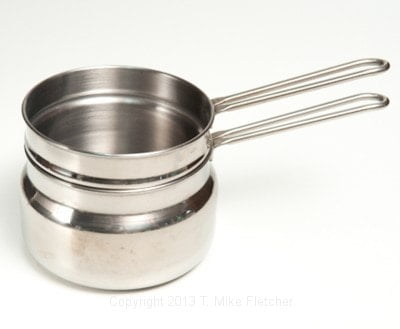
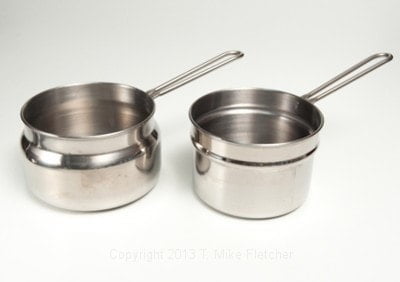
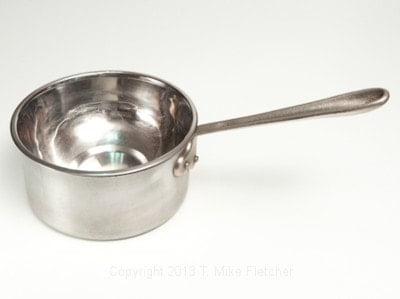
Double Boiler This specialized piece of equipment consists of one pan seated inside of a second pan with room for water. Water is added to the bottom pan so the contents of the upper pan can be warmed or cooked gently without direct heat to keep it from breaking or burning. Placing a bowl over a pan of simmering water is an alternative.
Dishers or Scoopers
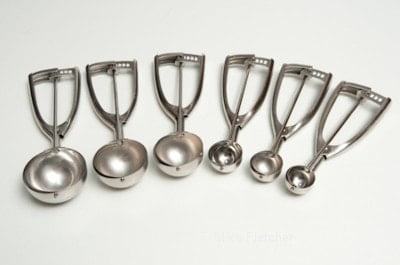
These are used for portion control and ease of shaping or dropping bakery items. They come in a variety of sizes ranging from #100 to 8 with the highest number being the smallest size. The size refers to the number of scoops it takes to fill a quart. These are Vollrath products. Vollrath also makes a line with colored handles and additional like with squeeze handles.
I prefer the all stainless steel dishers to the plastic handled ones as I believe they are more durable. I have used mine for 25 years.
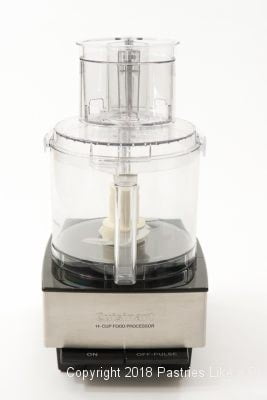
Food Processor The tasks this machine can perform are amazing. But there are some caveats. It doesn’t puree as good as a blender and nuts can be turned into butters or cut too finely in seconds. But I wouldn't give my up processor when it comes to baking and pastry. The pulse button can save you from disaster. The size of the motors varies as well as the capacity of the bowls. Processors usually come with several blades including an S-shaped blade that chops and purees and several discs for slicing and shredding. The more powerful machines can make bread dough. A feed tube on the lid of the plastic bowl allows food to be added while the machine is running. This is a real workhorse and a great piece of equipment for the sweet kitchen. The 14 cup machine will handle just about anything. I recommend it over the smaller machines.

Knives Good knives will last a lifetime. They should be balanced and hold a sharp edge when sharpened. Essential knives for baking and pastry include a small paring knife, chef’s knife in a length you can easily use and a good bread knife with a serrated blade. I use Henkel knives and if you can find a set like these that include kitchen shears and steak knives that is perfect.
A knife sharpener is important to keep the knives sharp. An electric sharpener makes quick work of this job.
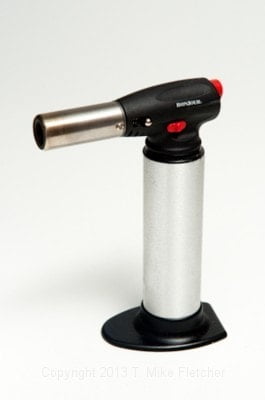
Heat Gun or Blow Torch
This is used to brown meringues or the sugar for creme brulee.
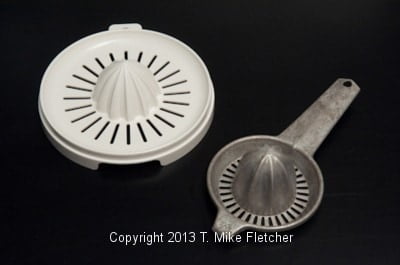
Juicer This is probably the oldest, ugliest juicer ever, but I love it. The looks of this is a testament to never putting aluminum items in a dishwasher. There are many versions of juicers including electric ones. This is a simple version were the cut citrus fruit is put on top of the juicer and twisted and pressed down to extract the juice while leaving the seeds behind. Also pictured is a plastic version.

Ladles of different sizes are useful for portion control or to move liquids. They come in different sizes and professional ladles are marked in ounces. I prefer stainless steel to plastic.
Measuring cups come in wet and dry measures.

Liquid Measuring Cups
The liquid measures have graduated sizes on them and are used for liquids which is why there is usually a lip on the top. They come in sizes from 1 cup up to 1 gallon. I have seen them in metal, ceramic, glass, and plastic. I prefer glass because it is easy to see through and won't absorb flavors.
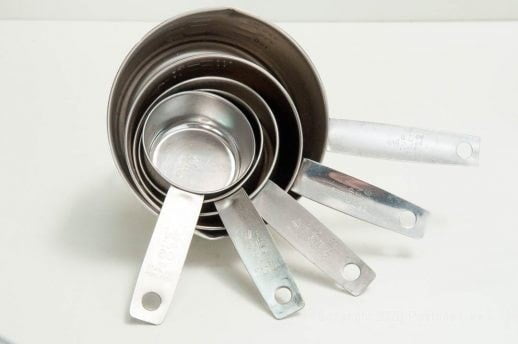
Dry MeasuresDry measures are used for any dry ingredient. The important thing here is to overfill the cup and sweep the excess off with the back of a knife or any flat utensils. While cups are fine for some items, weighing dry ingredients is used by professionals and is encouraged for pastry/baking success
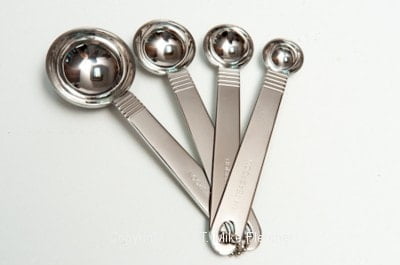
Measuring spoonsare used to measure small amounts of ingredients. They come in a variety of sizes held together on a ring.
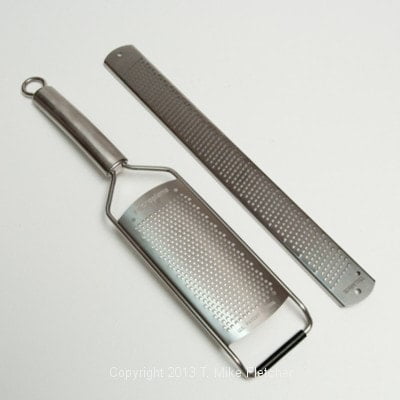
MicroplanerThis is one of the most wonderful tools in a kitchen. Microplaners can be used to grate citrus rinds, chocolate, nutmeg, etc. They are particularly good as they remove the zest from citrus fruits without taking the bitter white pith underneath. They also keep the zest dry. My favorite is the one on the left.
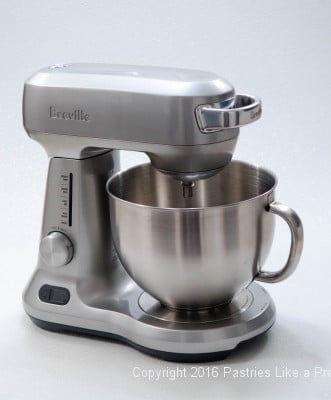
MixerThis is a necessary piece of equipment for pastry making. They are used to combine, beat or whip ingredients. There are hand mixers and stand mixers that go from 4 ½ quarts to huge 140-quart commercial mixers. Generally speaking, hand mixers do not have enough power for many baking and pastry applications. Stand mixers have more power and in addition to performing baking and pastry tasks, many come with attachments that enable them to perform even more tasks such as grinding meat, stuffing sausage, juicing citrus, crushing ice and making pasta. Most of the stand mixers come with a paddle, whisk, and dough hook for making bread. I use a 5 quart Breville Scraper Mixer Pro but have also used KitchenAid Cuisinart and Kenmore mixers. Every company makes more than one size. All of my recipes are figured for a 5-quart mixer. See my comparison of the Breville and the KitchenAid mixers.
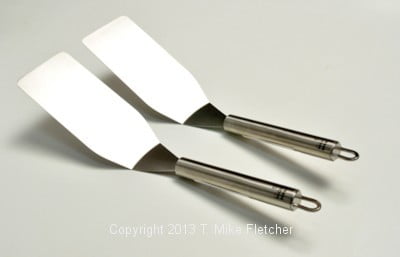
Pancake Turnersare used to move tarts or cakes to their boards or platters. Two sturdy turners are placed, one on each side, to lift the tart and move it into place. I prefer stainless steel as they are stronger than plastic turners. I have had the handles snap off of the plastic turners.
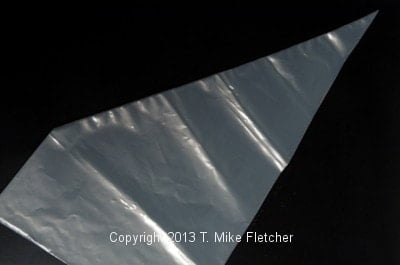
Pastry Bags
are used in conjunction with pastry tips to finish pastries. They come in various sizes. I prefer the 16 or 18 inch bags. They can always be cut down if a smaller size is needed. Disposable plastic bags are used professionally to avoid cleanliness issues. If large, they can be cut down.
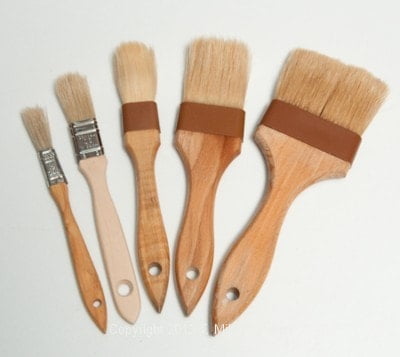
Pastry Brushes come in a variety of widths and sizes. They are useful for washing down the sides of pans, brushing flour away, applying glazes and more. While expensive, it is best to use natural bristles. The plastic bristle brushes can melt on a hot pan.
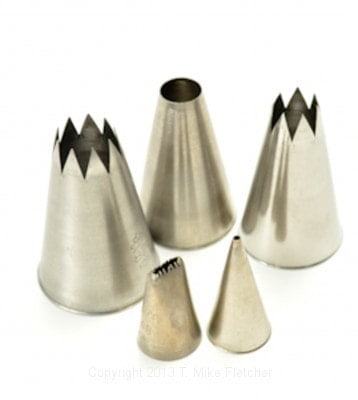
Pastry Tips
are used with pastry bags. They come in plain tips, open start, B tips basketweave and speciality tips. In addition to the various types of types, the tips come in different sizes. I have chosen a basic starter set of tips that gives plenty of variety.
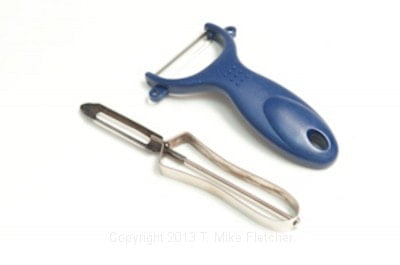
Peeler There are many styles of peelers available including ergonomic ones. I like the old fashioned version that has a rounded end for digging out the eyes of potatoes or other produce. The important thing here is to find one that is comfortable in your hand.
Quiche pans - See tart pans with removable bottoms.
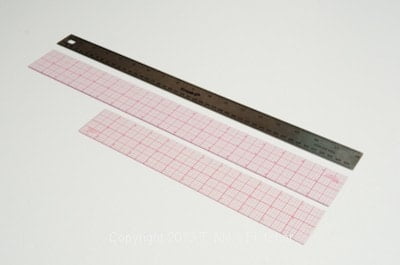
Ruler Any ruler, plastic or metal can be used. An 18" metal ruler is invaluable for measuring large pieces of dough.
Saucepans Several sizes of pans including small to medium are used. Heavy pans will not only last a lifetime but prevent items from burning and allow more even heat disbursement. I have several different brands. All Clad and Le Crueset is my favorite.
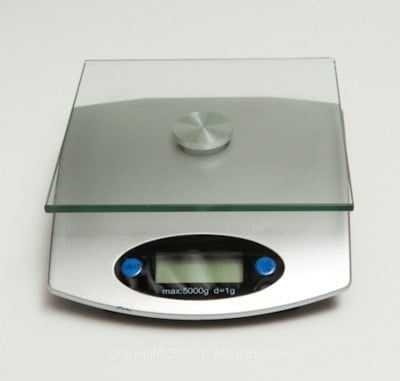
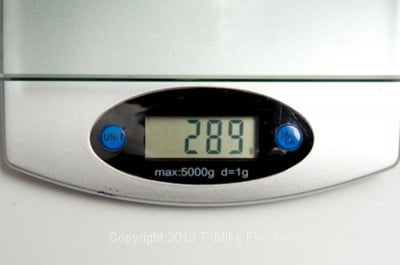
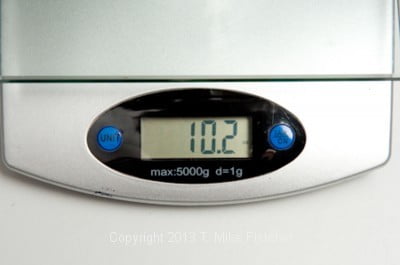
Scales My mantra is scales, scales, scales. Not only for accuracy but for speed. It is so much faster to weigh ingredients than to measure with spoons and cups. Since successful baking and pastry depend upon the accuracy of measurements, scales provide a foolproof way of measuring. No professional should ever measure with anything but a scale. Using a battery operated scale is preferable since you can move it around with ease. Make it weighs in grams and ounces and includes a tare button so it can be reset to zero. It should weigh a minimum of 5 pounds.
However, in the spirit of compromise, if you don’t use a scale, stir the flour briefly in the bag or canister as it settles. Dip a dry measure into the flour and fill to overflowing; sweep off the excess.
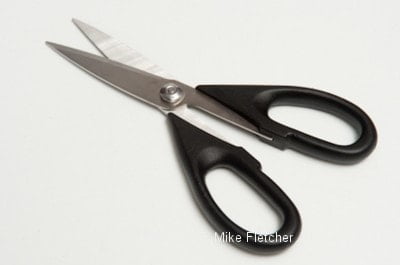
Scissorsare useful for a number of tasks in the bakers kitchen
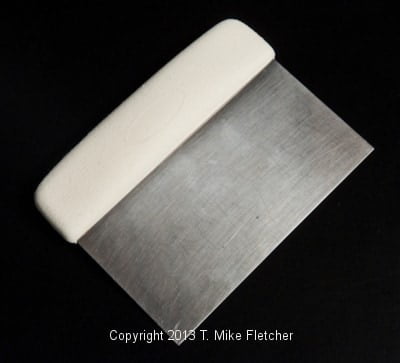
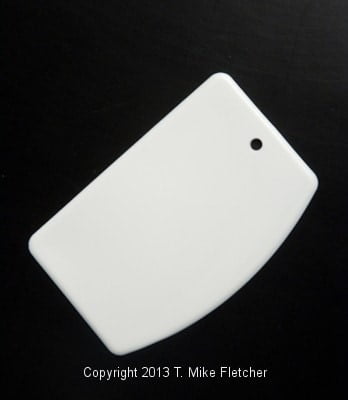
Scrapers Scrapers are indispensible tools for baking and pastry. The bench scraper was originally used to scrape flour off of the area used to make bread which is referred to as a bench – hence bench scraper. In addition to scraping clean a work area, this scraper can be used to cut dough into pieces. The second scraper is a bowl scraper used to get everything out of a mixing bowl. It is plastic and has a curved side and a flat side. The curved side is used to scrape out the sides and bottom of a bowl.
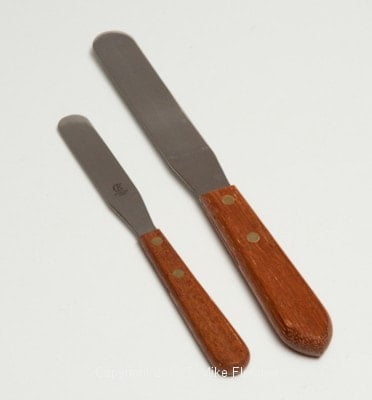
Spatulas, Metal Large and small metal spatulas are important for frosting canes and releasing items from pans.

Spatulas, Metal, Offset Off set spatulas in both large, small and pointed are important for frosting cakes, particularly finishing the top, spreading any number of items out and releasing items from pans. The pointy one is useful for scalloped edge pans such as the pans used in this book.

Spatulas, Rubber Various sizes are available. From narrow to wide from about 13 inches to 20 inches, they serve a variety of duties in the baking/pastry kitchen. Do not use regular rubber spatulas in hot items. There are specially made high heat spatulas for use in hot pots.
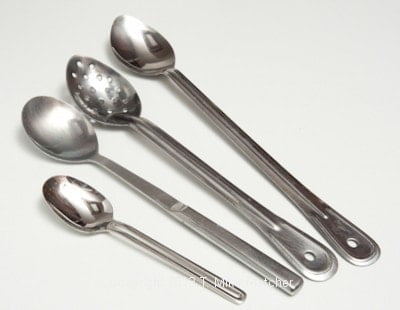
Spoons of various sizes are useful from small tasting spoons to larger ones used to stir ingredients together.
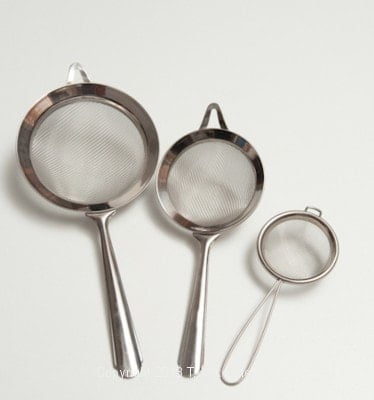
Strainer A variety of strainers in different mesh sizes are useful for straining, washing fresh fruit an sprinkling powdered sugar among other things. They often come in sets of varying sizes.

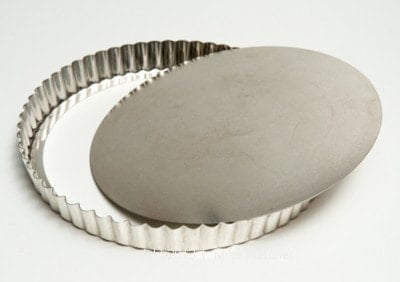
Tart pans with removable bottoms Also referred to as quiche pans, these short tart pans with fluted rims, usually have sides that are ¾ to 1 inch tall. The bottoms come out which makes anything in them very easy to release without turning the pan upside down. These come in various sizes from 3 ½ inches, which is the smallest pan I have used to 12” round. I have also seen them in square and rectangular pans.
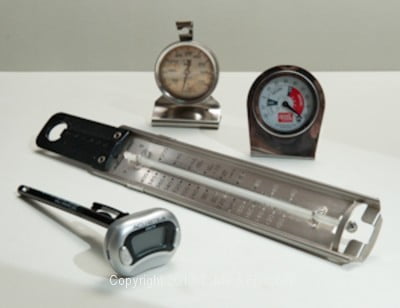
Thermometers

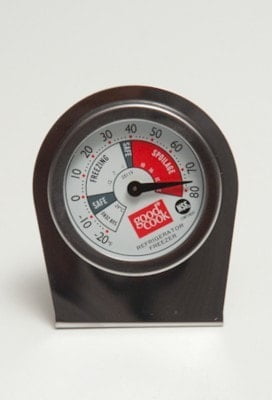
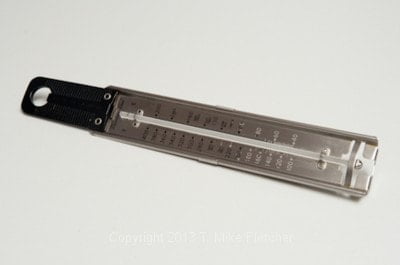
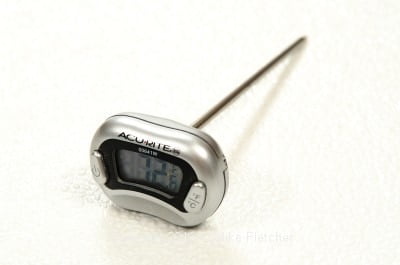
There are a variety of thermometers for different uses. Freezer and refrigerator thermometers are important to keep track of the temperatures for safety. Freezers should be kept at 0 degrees or below. Refrigerators should be kept at 40 degrees. A candy thermometer registers high temperatures used in candy and sugar work.

Toothpicks and Skewers These are used to finish desserts.
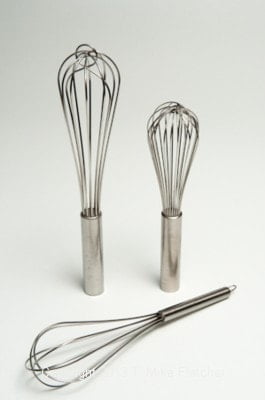
Whisks can be used for various tasks in the kitchen, including mixing and whipping ingredients. They come in very fine wire to heavy wire depending upon the use. They also come in various heights to accommodate different size containers.
Additional Items Not Mentioned in the Book
Cake Pans - There are many sizes and shapes of cake pans from round to square, oblong to speciality shapes. Buy the heaviest weight pan you can. They will last a life time as many of these demonstrate. Some of these are 30 years old, some new. Buy as you go along. If you don't need square baking pans, don't get them. These are ones in my collection. This 9" round cake pan is my most used cake pan . The round pans are 6" to 24" with the larger ones being used for wedding cakes. The brand I use is Magic Pans. The are inexpensive among professional pans, they are heavy weight and last forever if well cared for. the pan above is at least 25 years old. I have 12 in my personal collection as I brought them from the bakery when it was closed. If you plan to bake your layers as i do in single layers as opposed slicing the layers, I would suggest 4 pans would suffice. We had over 150 of these at the bakery for various cakes we baked on a daily basis.
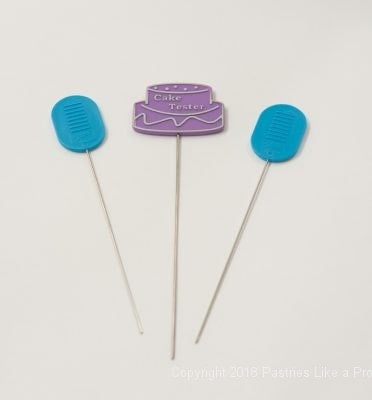
Cake Testers
I prefer these to toothpicks that can leave a larger hole in the product.
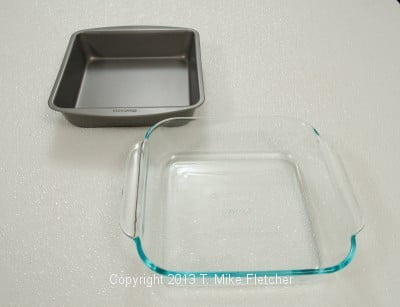
Square Baking PansThese come in glass or metal. The metal can be light or dark. Both of the above require a reduction in the heat when baking of 25 to 50 degrees as they conduct the heat faster than light colored aluminum. The normal size for home bakers is 8" and 9".
9x13 Inch Rectangular PanPopular for bar cookies of all kinds this pan has many uses.
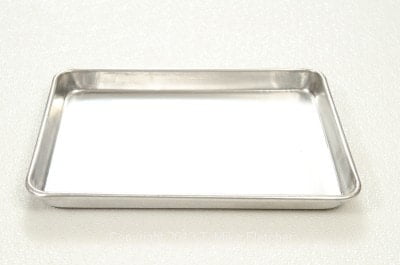
Quarter Sheet PanThis is a new addition to my baking pan collection. It is the same size as a 9x13 inch pan but the sides are not as high. It is one half of a half sheet pan. I find it more convenient for recipes where the height of the item is only about ¾ inch when baked.
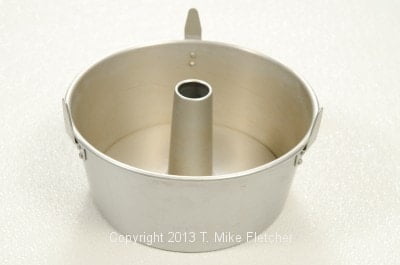
Speciality Pans
Angel Cake Pan
This deep pan has a removable bottom to easily remove the baked cake. Angel Food Cakes are typically 5 to 6 inches deep. The tube in the middle facilitates the heat reaching the center of the cake so the sides don't burn. This is one of my favorite cakes and I could probably eat it every day.

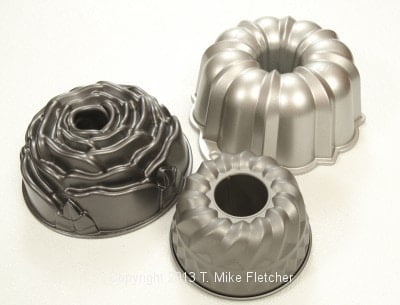
Bundt PansThese three bundt pans are just a few of the many out there. They come in all sizes and shapes. The 12 cup bundt pan in the right rear is the original design and the only one for many years. Then manufacturers boosted their popularity with different shapes and sizes as you can see. The shape of the finished cake can be seen by turning the pan upside down as this is how it would be served.
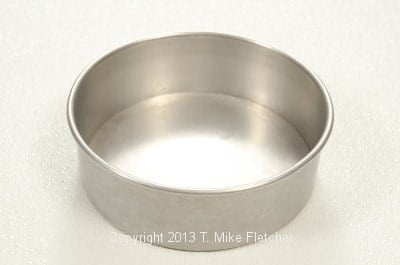
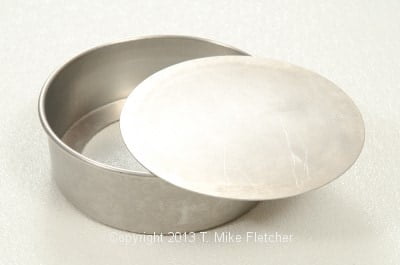
Cheesecake PansAt the bakery we had dozens and dozens of these. We used them not only for making cheesecakes but assembling cakes that had wiggly fillings that needed to be refrigerated or frozen before finishing. I much prefer this pan to springform pans for several reasons. The springform pan does not have a perfectly flat removable bottom as does this pan making it more difficult to remove the cheesecake. Also, after years of use or if not stored properly, the spring can get sprung making it unusable. This pan with its removable bottom makes it ideal for uses other than cheesecakes. When we made cheesecakes requiring water baths, we simply wrapped these in aluminum foil to keep the water out.
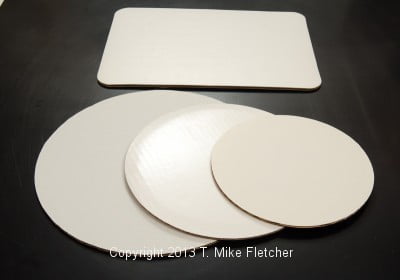
Cake Boards and Parchment

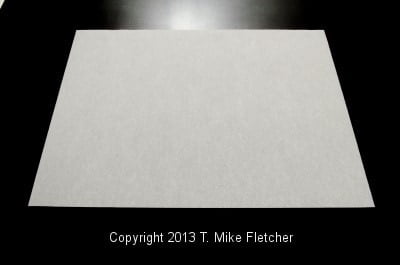
Cake boards are the easiest way to assemble a cake. At a bakery it is what we used to send the cakes out. There are two kinds of boards, waxed and unwaxed or coated and uncoated. If available always take the waxed. It will cost a little more but they don't have to be wrapped in foil as unwaxed boards do. If a cake is put on an unwaxed board the board will draw moisture out of it. A waxed board allows the cake to sit on it as long as needed without changing in taste or texture. The boards come in all sizes including quarter and half sheets as well as full sheet boards. Some also come in single and double strength. I always specified double strength if available in the size I needed. You can see the waxed or coated round in the photo above. It is the shiny round board in the middle of the cake board photo.
Parchment paper is indispensable in a bakery and so it is at home. It prevents batters from sticking and it makes clean up a lot easier. Parchment comes in various size rounds. We bought full sheet and had it cut by the supplier into half sheets for ease and speed of use.
There are silpat pan liners that can be used. We didn't use them in the bakery because of their expense and the fact I didn't feel we could keep them adequately clean. I still use parchment for my personal baking just as I did at the bakery.
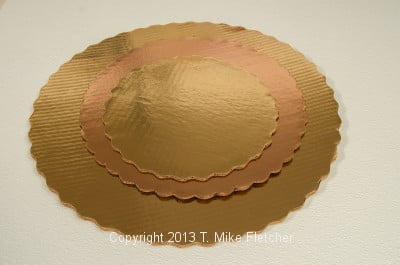
Gold Cake BoardsThese are "dress up" cake boards. We used these for retail customers when we did custom cakes for them. They make a prettier appearance than the plain white boards.

Wax PaperThis was the precursor to parchment for home bakers. Although I use parchment for lining my sheets and pans, I use wax paper for rolling out dough when the recipe calls for rolling between wax paper. I prefer it to parchment because it is easier to use. Whenever no additional flour is recommended when rolling out a dough, particularly a thin one, wax paper is great.
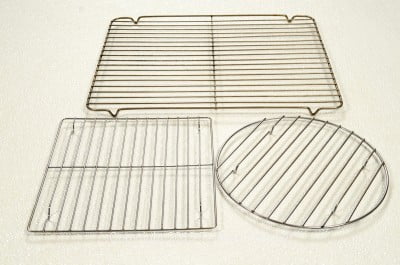
Cooling RacksWhile professional bakeries cool their items in their pans placed on racks, home bakers often use cooling racks of different sizes and shapes. Here again, buy the sturdiest ones you can find that have a high foot on them.
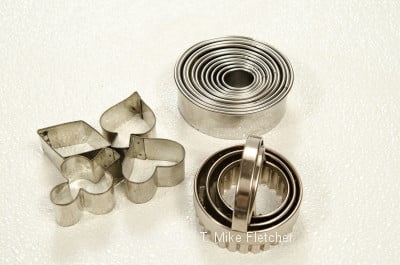
Cookie and/or Biscuit cuttersWhen I had the bakery, I had literally hundreds and hundreds of cookie cutters. My husband hated to see me head for the rack of cookie cutters because he knew I would find something I didn't have either large or small. I also had a lot of sets as I found them enormously helpful. In the photo above you can see a set of three rippled biscuit cutters which of course can be used for cookies. In the back is a set of round cutters in many sizes and to the left are cookie cutters that belonged to my mother. They have to be about 75 years old. The real kicker that they are still kept in the original box which says .29 cents. Mother made a Christmas cookies every year with these. When I post the Murbteig blog later this year, you will see one of my favorite Christmas cookies.
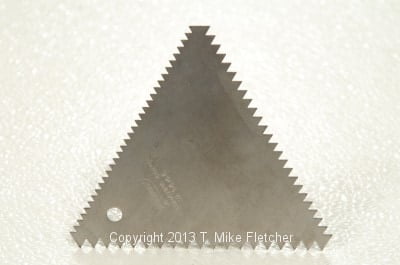
Cake CombThis decorating tool is ideal for giving the sides of a cake a finished look. I also used it sometimes on the top to add interest to a plain finished cake.
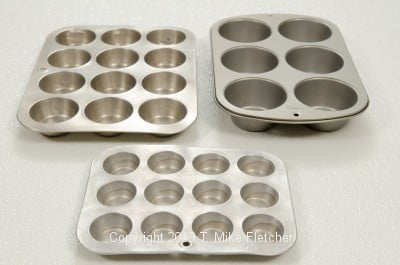
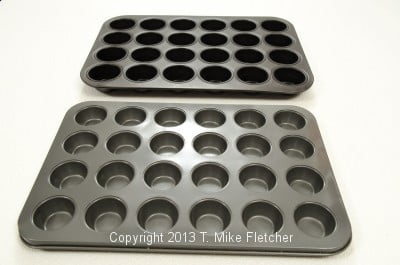
Cupcake or Muffin PansThis photo shows a mini pan in front, a regular size pan in the back left and a Texas muffin tin in the back right. The Texas cup holds about twice as much as the regular size tin. I like to make cupcakes in the regular size tin and frost them generously as I think most people eat a cupcake for the frosting, not the cake. However, for muffins I favor the Texas puffin tin as the regular size always seems small to me.These pans are also muffin pans. However, since there is no standard size for muffin cups, there are a bit larger than the ones above. The pan to the from is for minis and the one in the rear is for regular size muffins although larger than the one in the photo above it.
Chicago Metallic makes excellent pans although they are expensive and they are a bit larger than the first photo. I loved them.
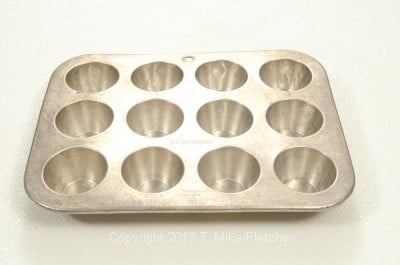
Popover PanA popover pan has a deeper cup than muffin tins and the cups are shaped differently. The bottom is smaller than the top which helps the popover pop over.
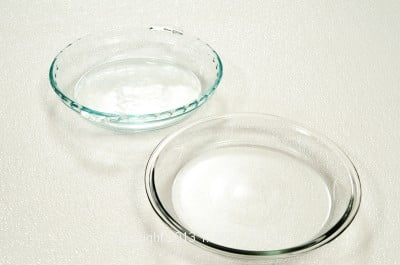
Pie PlatesThere are metal and ceramic pie plates as well as the glass ones above. They come in 9" and 10" diameters. The 9" standard pie pan, as seen in the front, has a depth of about 1 1 /2 inches. The 10" deep dish version pictured in the back has a depth of about 2 inches. I prefer glass because I can see how the crust is baking and coloring. Both of these are by Pyrex and can be found at Walmarts. They are the least expensive pie plates around.

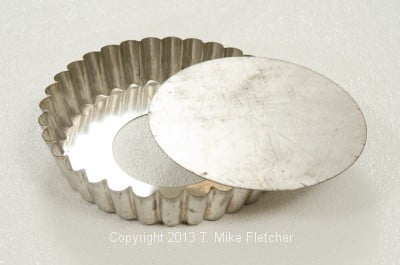
Deep Dish Tart Pan
This is a deep dish quiche pan with a removable bottom. They come in 8", 9" and 10" x 2" deep sizes. At the shop we used the 9" size for our Deep Dish Tarts. I was often asked what the difference was between a pie and a tart. The answer was nothing except tarts have a fluted edge and pies don't. Also, the tarts did not have a top crust. The were finished with crumbles or streusels. As you can see, the removable bottom made it very easy to get them out of the pans.
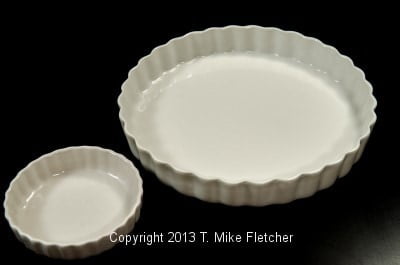
Ceramic Quiche PansThese provide a finished look to quiches served in a dish. If they are to be removed from the pan, a two piece pan, as above is more useful. These come in individual and various larger sizes.
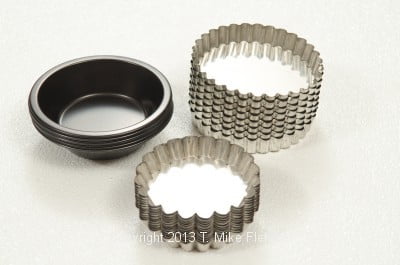
Individual Tart PansThese are assorted individual tart pans of various sizes. Some with removable bottoms.

Souffle DishesIn addition to soufflés these various dishes can be used for puddings, creme brûlées, custards and a variety of other desserts. The dishes come in different sizes. Pilliveyt in France makes a thin, study beautiful soufflé dish but there are many others. Just make sure they are oven proof.

Miscellaneous Pans
Hamburger Bun PanI have no idea why I bought this. Still haven't used it. Don't do this!
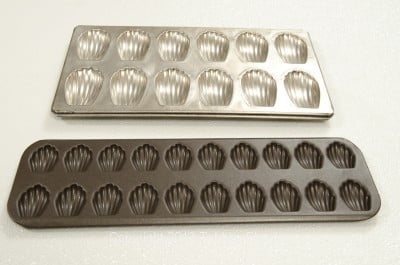
Madeleine PansThese pans are for a specific shaped pastry. The original madeleine was nothing more than sponge and had to be eaten quickly as they dried out quickly. I used them with different batters for their shape. In the front is a pan with mini madeleines and in the back is the regular size. They add a great deal to a sweets tray.
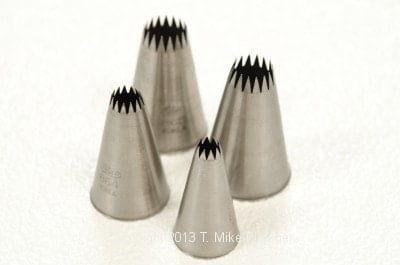

Pastry TipsThese tips are others we used in addition to the ones that were featured in the book. The four tips are "B" tips. The tines are much closer together and give a different look from an open or closed star. The tip below is a Bismarck tip and is used to insert a filling into a doughnut, pastry or cupcake. Its long shank allows for deep penetration into the product so the filling can go deep inside.

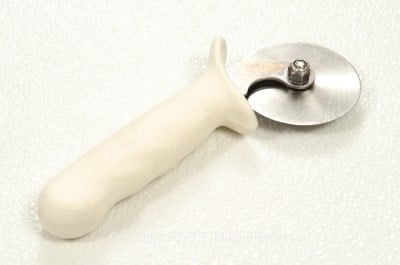
Pastry CuttersThe top cutter has a wavy edge that gives a pretty rippled look to the pastry or cookie. The pizza cutter is a quick way to cut long or short pieces of dough.
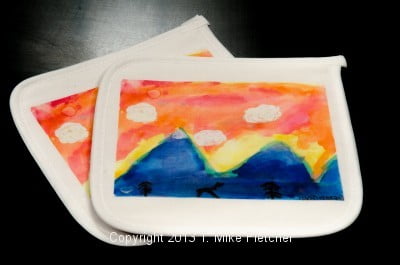
Pot HoldersOk - so this is the grandmother in me. My grandson made these for me and I just love them. But they are useful to protecting my hands when handling hot pans. Oven gloves or mitts are also very good.
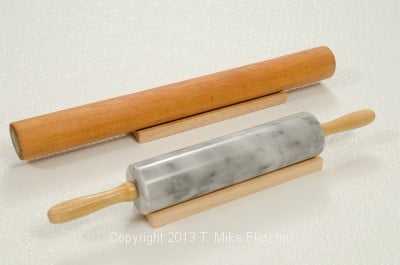
Rolling PinsI have a rolling pin collection but these are the two I use on a daily basis. The wooden rolling pin is useful for doughs that are not heavy in butter which tends to soften quickly and stick to the wood. I also like it for doughs that are wide. I use this one a lot when I am rolling doughs that are placed between sheets of waxed paper.
The marble rolling pin is very heavy and is my go to pin for doughs that need to be kept chilled. The marble picks up the cold from the doughs and helps keep butter heavy doughs from softening too quickly.
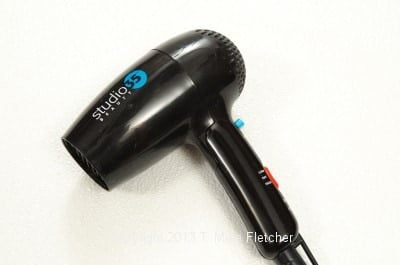
Heat GunThis is a blow drier and is a great tool for releasing cakes and tarts by gently heating the rim of the pan and sliding it down to free the dessert. We used a vinyl tile removing gun which is a much hotter heat gun at the shop as we needed to release a large number of items in any given day.
At the restaurant I use a big blow torch that really moves things along. I don't recommend it for home use.


Can OpenersThere are two types of can openers above. The first one was given to me by my husband as my hands are no longer as strong as they used to be. It works as a ratchet which needs less strength. The opener on the bottom is for cans of liquids that will pour out of the hole made. Make sure a second hole is punched across from the original one or the liquid may not pour out.


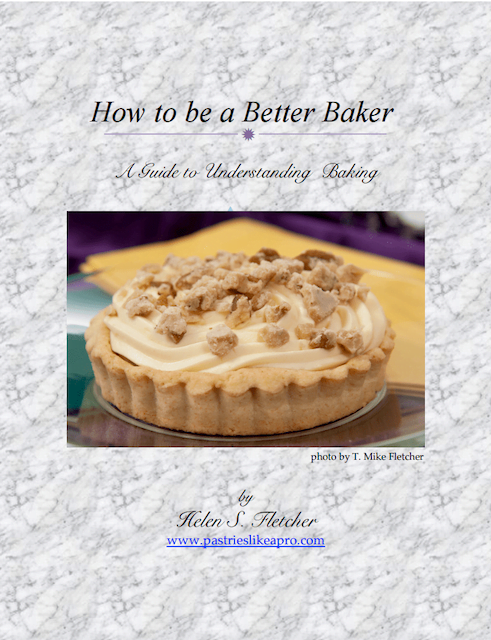

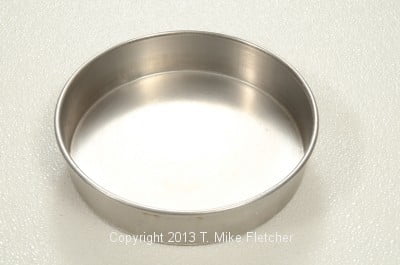
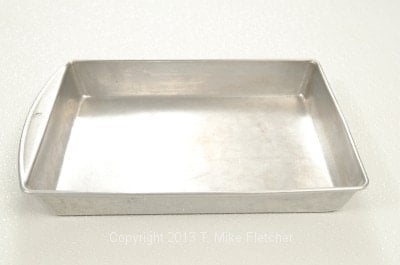


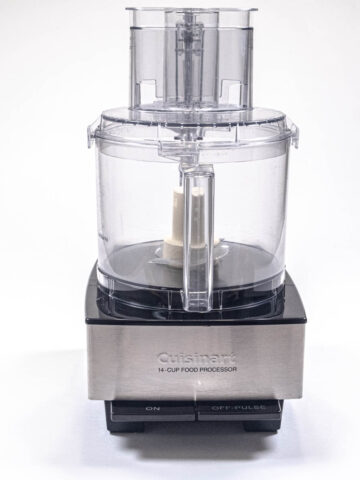
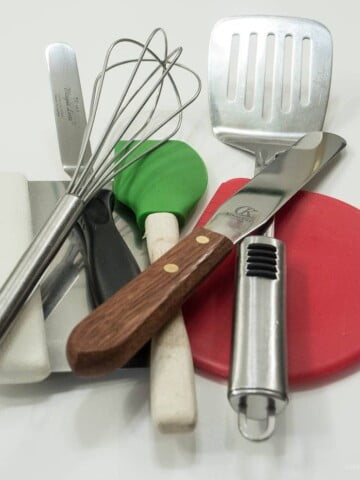
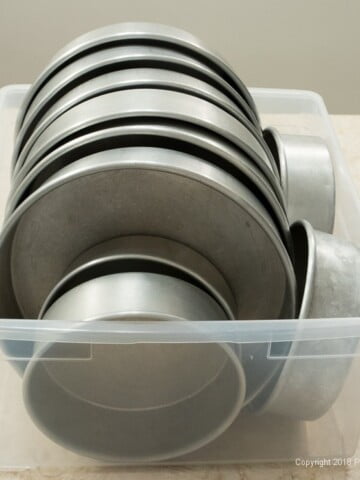
manisha says
Thanx Helen for this informative post. I was happy to see that my baking den is pretty well equipped. I would really like to know the brand name of candy thermometer. I had something similar looking as yours but its marking got erased over a period of few months of using it.
hfletcher says
Hi Manisha: The candy thermometer is from Taylor. A lot of my painted lines are gone after 25 years but I can see the indents that were painted. I would have bet you had most of the equipment.
sallybr says
Oh, I love this post! I think my kitchen is not in too bad a shape for a person who doesn't bake that often... ;-)
If you don't mind sharing a recommendation for dishers/scoopers, I'd love to know, because the one I got broke after two uses. Even online reviews are not helping me decide on a brand.
again, loved this round up, very helpful!
hfletcher says
Hi Sally: Thanks for the comment. I used and still do, Vollrath all stainless steel. They are sturdy and last forever. All of the ones pictured are 20 to 25 years old. We always hand washed them at the bakery which may have helped. They were more expensive than many offered but I found them worth every penny. They also make a line that is color coded - I never used those and don't know anything about them as they came out after I stopped buying dishers. Hope this helps.
sallybr says
Awesome! Thanks so much! I actually have one heat-resistant spatula from Vollrath, and the quality is amazing....
will go search for the scoopers in amazon.com
hfletcher says
You are most welcome. Remember to get the stainless steel ones.